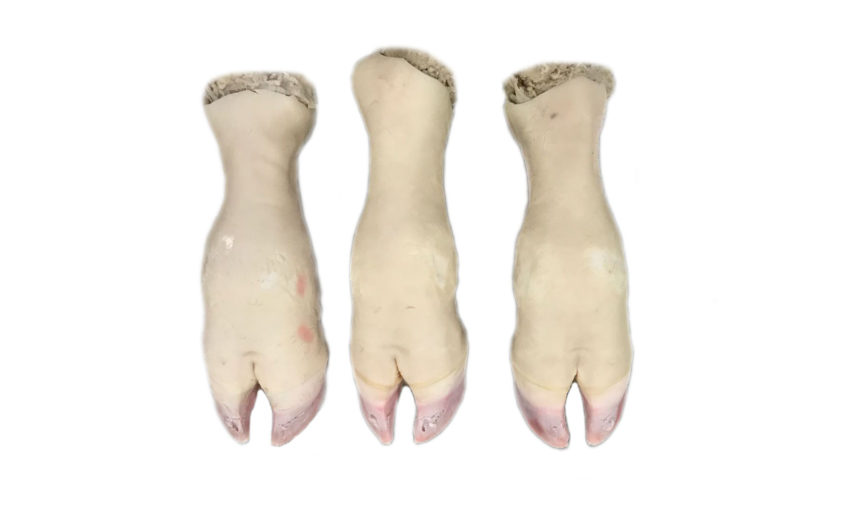Beef feet, often overlooked in Western cuisine, are gaining popularity as a nutritious and versatile ingredient. These gelatin-rich cuts offer a wealth of health benefits that many are just beginning to explore. From boosting joint health to improving skin elasticity, beef feet provide a host of advantages that make them a valuable addition to any diet.
As more people turn to traditional and ancestral diets, the spotlight on beef feet benefits has grown significantly. This humble ingredient, often used in Asian, African, and Caribbean cuisines, is packed with nutrients that can enhance your overall well-being. Understanding its nutritional profile and culinary uses can open up new possibilities for health-conscious individuals.
In this comprehensive guide, we will delve into the various beef feet benefits, explore how to incorporate them into your diet, and provide evidence-based insights to help you make informed decisions. Whether you're a health enthusiast or a culinary adventurer, beef feet deserve a place on your radar.
Read also:Josh Wiggins Partner Exploring The Life And Career Of A Rising Star
Table of Contents
- Biography of Beef Feet
- Nutritional Profile of Beef Feet
- Beef Feet Benefits for Joint Health
- Boosting Skin Health with Beef Feet
- Supporting Digestive Health
- Culinary Uses and Recipes
- Sustainability and Ethical Considerations
- Variations and Substitutes
- Frequently Asked Questions
- Conclusion and Call to Action
Biography of Beef Feet
Introduction to Beef Feet
Beef feet, also known as cow's feet, are a byproduct of cattle processing that has been utilized in various cultures for centuries. These cuts are not only economical but also rich in essential nutrients. Historically, they have been a staple in traditional diets across the globe, particularly in regions where resourcefulness in food preparation is key.
Beef feet benefits are deeply rooted in their cultural significance. For instance, in Caribbean cuisine, they are used to make soups and stews that are both hearty and nutritious. Similarly, in Asian cultures, beef feet are often braised or slow-cooked to extract their full flavor and nutritional value.
Nutritional Overview
Rich in collagen, gelatin, and other beneficial compounds, beef feet offer a unique nutritional profile. These components contribute to their reputation as a superfood for joint and skin health. Additionally, they are a good source of protein, which is essential for muscle repair and growth.
Nutritional Profile of Beef Feet
Understanding the nutritional makeup of beef feet is crucial to appreciating their health benefits. Below is a detailed breakdown of the key nutrients found in beef feet:
- Collagen: A major structural protein that supports skin, joints, and connective tissues.
- Gelatin: Derived from collagen, gelatin aids in digestion and promotes gut health.
- Protein: Essential for building and repairing tissues, making it vital for overall health.
- Minerals: Beef feet contain minerals like calcium, phosphorus, and magnesium, which support bone health.
According to the USDA, 100 grams of cooked beef feet provide approximately 25 grams of protein, making them a substantial source of this macronutrient. This nutritional density is one of the primary reasons why beef feet benefits are so highly regarded.
Beef Feet Benefits for Joint Health
Collagen and Joint Support
One of the most notable beef feet benefits is their ability to support joint health. The high concentration of collagen in beef feet helps maintain the integrity of cartilage, tendons, and ligaments. Studies have shown that consuming collagen-rich foods can reduce joint pain and improve mobility, particularly in individuals with osteoarthritis.
Read also:Bella Poarch Boyfriend The Ultimate Guide To Her Love Life
Anti-Inflammatory Properties
Beef feet also contain anti-inflammatory compounds that can alleviate joint discomfort. By incorporating these cuts into your diet, you may experience reduced inflammation and enhanced joint function. This makes them an excellent choice for athletes and individuals recovering from injuries.
Boosting Skin Health with Beef Feet
Collagen for Skin Elasticity
Collagen is a key component of healthy skin, and beef feet are an excellent natural source of this protein. Consuming collagen-rich foods like beef feet can improve skin elasticity, reduce wrinkles, and enhance overall skin texture. This makes them a popular choice among those seeking natural beauty solutions.
Hydration and Moisture Retention
Gelatin, another prominent compound in beef feet, plays a role in skin hydration. It helps the skin retain moisture, leading to a more youthful and radiant appearance. Regular consumption of beef feet can contribute to healthier, more supple skin.
Supporting Digestive Health
Gelatin and Gut Healing
Gelatin, derived from collagen, is known for its gut-healing properties. It can help repair the lining of the digestive tract, making it beneficial for individuals with conditions like leaky gut syndrome or irritable bowel syndrome (IBS). Incorporating beef feet into your diet may improve digestion and nutrient absorption.
Protein and Enzyme Production
The protein content in beef feet supports the production of digestive enzymes, which are essential for breaking down food and extracting nutrients. By enhancing enzyme production, beef feet can contribute to a more efficient digestive process.
Culinary Uses and Recipes
Traditional Dishes Featuring Beef Feet
Beef feet are versatile ingredients that can be used in a variety of dishes. Some popular recipes include:
- Caribbean Cow Foot Soup: A rich and flavorful soup made by slow-cooking beef feet with vegetables and spices.
- Chinese Braised Beef Feet: A dish where beef feet are simmered in a savory sauce until tender and flavorful.
- African Stews: Beef feet are often used in hearty stews that combine bold flavors and spices.
Tips for Preparing Beef Feet
Cooking beef feet requires patience, as they need to be slow-cooked to achieve the desired tenderness. Here are some tips for preparing them:
- Soak beef feet overnight to remove impurities and reduce cooking time.
- Use a pressure cooker to speed up the cooking process while maintaining flavor.
- Pair beef feet with complementary ingredients like ginger, garlic, and chili for enhanced taste.
Sustainability and Ethical Considerations
Reducing Food Waste
Utilizing beef feet aligns with the principles of sustainability and reducing food waste. By consuming these often-discarded cuts, we can make better use of available resources and minimize environmental impact.
Ethical Sourcing
When purchasing beef feet, it's important to consider ethical sourcing practices. Look for suppliers who prioritize humane treatment of animals and sustainable farming methods. This ensures that you are supporting responsible and environmentally friendly practices.
Variations and Substitutes
Alternative Cuts
If beef feet are not readily available, there are alternative cuts that offer similar nutritional benefits. These include:
- Oxtail: Another collagen-rich cut that can be used in soups and stews.
- Pigs' Feet: A popular substitute in many recipes, offering comparable nutritional value.
- Gelatin Powder: A convenient option for those who prefer a more processed form of collagen.
Supplementing with Collagen
For those unable to incorporate beef feet into their diet, collagen supplements can provide similar benefits. However, it's important to consult with a healthcare professional before starting any supplement regimen.
Frequently Asked Questions
Are Beef Feet Healthy?
Yes, beef feet are healthy due to their high collagen and gelatin content, which supports joint and skin health. They are also a good source of protein and essential minerals.
How Do You Cook Beef Feet?
Beef feet should be slow-cooked to achieve tenderness. Methods include simmering in a pot, using a pressure cooker, or baking in the oven. Pairing them with spices and vegetables enhances their flavor.
Can Beef Feet Help with Weight Loss?
While beef feet are not a low-calorie food, their protein content can promote satiety and aid in weight management when consumed as part of a balanced diet.
Conclusion and Call to Action
In conclusion, beef feet benefits extend far beyond their traditional use in culinary dishes. Their rich nutritional profile makes them a valuable addition to any health-conscious diet. From supporting joint health to improving skin elasticity, beef feet offer a range of advantages that can enhance your overall well-being.
We encourage you to explore the culinary possibilities of beef feet and experience their benefits firsthand. Share your thoughts and experiences in the comments below, and don't forget to share this article with others who may benefit from learning about beef feet. Together, let's embrace the power of traditional foods for a healthier future!


